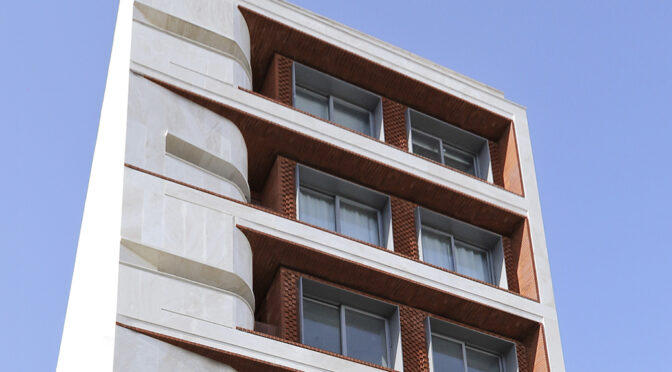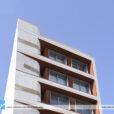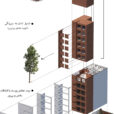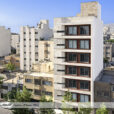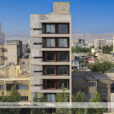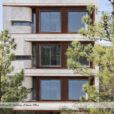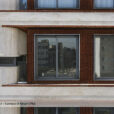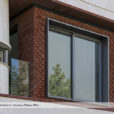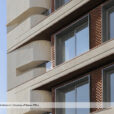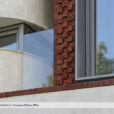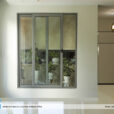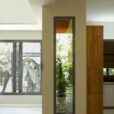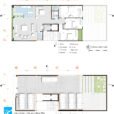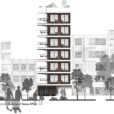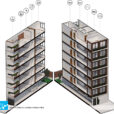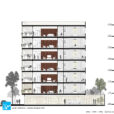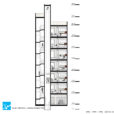ساختمان مسکونی درتو
دفتر معماری برساو (محمد ریحانی، علیرضا مدرسی)
موقعیت: مشهد، ایران
تاریخ: ۱۴۰۰
مساحت: ۱۳۰۰ مترمربع
وضعیت: ساختهشده
کارفرما: بخش خصوصی
مدلسازی سهبعدی: رسول جهانشیری، احسان فخریبیک
سازه: علی بزرگمهر
تاسیسات مکانیکی: محمدهادی شریعتپناه
تاسیسات الکتریکی: محمد جلالی
اجرا: محسن عجم، حسین محسنی
نظارت: علی سویزی
گرافیک: فائزه صمدی، حمیده صرافیان، متینه رضایی، الهام مهدیان
عکس: سحر نیکنژاد
استقرار سایت پروژه در مقابل چند باب تجاری و مسجدی در مقیاس محله، حضور و رفتوآمد رهگذران را به دنبال دارد، امری که به مذاق ساکنین پروژه خوش نمیآمد. از سوی دیگر، ضرورت بهرهمندی ساکنین از نور، تهویه و مناظر بیرون، نیازمند تعامل بنا و بافت اطراف بود.
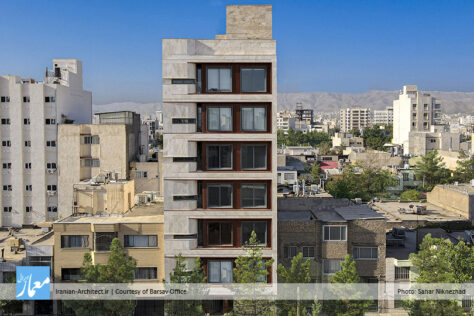
در برخورد با بافت اطراف، نما به دو لایه تقسیم شد که لایه خارجی برای ایجاد محافظت بیشتر، با کمترین میزان بازشو شکل گرفت، و لایه داخلی با بیشترین میزان گشودگی، برای تامین نور و تهویه. کشیدهشدن لایه بیرونی و فضای سبز نما به فضای داخل، و ظاهرشدن لایه داخلی در نما، اولین گام در ایجاد تعامل بین بنا و بافت اطراف بود.
Dartoo Residential Building
Barsav Office (Mohammad Reyhani, Alireza Modarresi)
Location: Mashhad, Iran
Date: 2021
Area: 1300 sqm
Status: Completed
Client: Private Sector
3D Modeling: Rasoul Jahanshiri, Ehsan Fakhri Beyk
Structure Consultant: Ali Bozorgmehr
Mechanical Consultant: Mohammad Jalali
Electrical Consultant: Mohammadhadi Shariatpanah
Construction: Mohsen Ajam, Hossein Mohseni
Supervision: Ali Soveizi
Graphic: Faezaeh Samadi, Hamideh Sarafian, Matineh Rezaei, Elham Mahdian
Photo: Sahar Niknezhad
The location of the project site in front of several commercial units and a mosque, leads to the presence and movement of passers-by, which was not to the liking of the project residents. On the other hand, the need for residents to enjoy the light, ventilation and outdoor scenery, required the interaction of the building and the surroundings.
In dealing with external events, the facade was divided into two layers. The outer layer was formed to provide more protection, with the least amount of opening, and the inner layer was formed with the highest amount of opening, for ventilation and light supply. The extension of the outer layer and its greenery into the inner space, and the appearance of the inner layer in the facade, was the first step in creating an interaction between the building and the surroundings.

